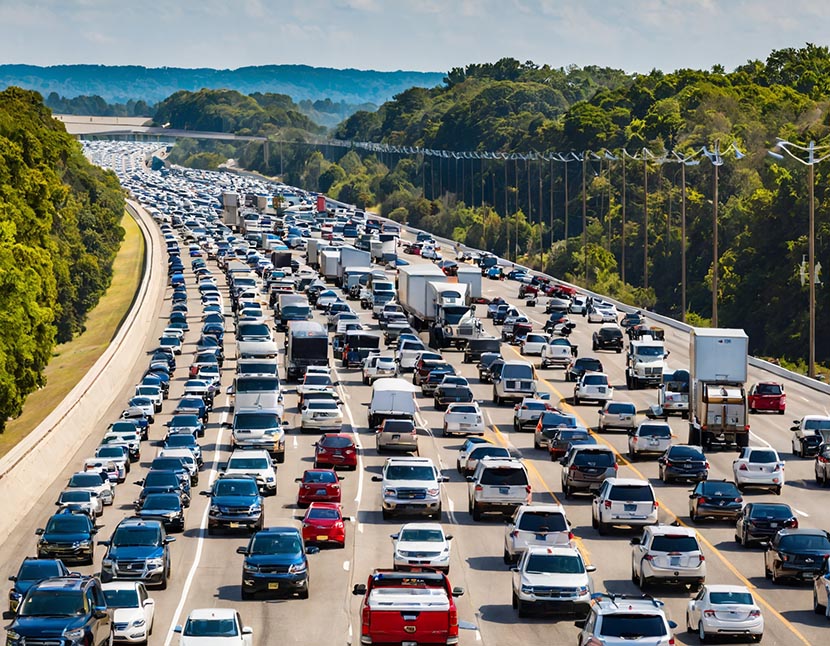Monday, August 26, 2024 As the United Kingdom wraps up its August Bank Holiday weekend , the global travel industry is now setting its sights on the United States, where the Labor Day holiday marks the unofficial end of summer. For millions of Americans, this long weekend offers one last chance to soak up the summer sun before the days grow shorter and cooler. Whether it’s a quick road trip, a beach getaway, or a visit to a theme park, Labor Day weekend is synonymous with travel.
But with great opportunity comes great preparation. Airports, highways, beaches, and popular tourist destinations are expected to be packed as Americans hit the road and take to the skies in droves. The Transportation Security Administration (TSA) is gearing up for what it expects to be a record-breaking weekend, with over 17 million travelers passing through security checkpoints.

Meanwhile, airlines are increasing their flight schedules to accommodate the surge, and AAA reports that domestic travel bookings are up 9% compared to last year. If you’re one of the many planning to take advantage of this final summer weekend, here’s what you need to know to navigate the crowds, avoid potential pitfalls, and make the most of your Labor Day holiday. Labor Day weekend is one of the busiest travel periods in the United States, rivaling other major holidays like Thanksgiving Day and Christmas Travel .
This year, the TSA anticipates screening more than 17 million passengers between Thursday and the following Wednesday, setting a new record for the Labor Day period. The agency’s busiest day is expected to be Friday, with 2.86 million travelers passing through security—a number that doesn’t even crack the top 15 busiest days in TSA history but still represents a significant uptick in travel activity.
Airlines are bracing for the surge as well. American Airlines, for example, is planning its largest Labor Day weekend operation ever, with a 14% increase in passengers compared to last year. The carrier has scheduled 6,400 flights on Thursday and Friday, followed by 6,300 flights on Labor Day itself.
These numbers underscore the importance of planning ahead and being prepared for potential delays and disruptions. If you’re hitting the road instead of flying, you’ll be in good company. Many Americans opt for road trips over the Labor Day weekend, either as a cost-effective travel option or simply to enjoy the journey.
Fortunately, motorists are getting a break at the pump this year. According to AAA, the nationwide average for gasoline is $3.44 per gallon, down from $3.
86 a year ago. This decrease in fuel costs is likely to encourage more road travel, adding to the congestion on highways. For those driving electric vehicles, the cost of charging varies by state.
The average price for a kilowatt of power at an L2 commercial charging station is about 34 cents, with some states like Kansas and Missouri offering lower rates around 25 cents, while others like New Hampshire, Tennessee, and Kentucky have higher rates exceeding 40 cents. Hawaii tops the list with an average of 56 cents per kilowatt. To avoid the worst traffic, it’s crucial to plan your departure times carefully.
According to transportation-data provider INRIX, the worst times to travel by car on Thursday will be between 1 p.m. and 7:30 p.
m., and on Friday between 2 p.m.
and 6 p.m. On Saturday, traffic is expected to be heaviest between 8 a.
m. and 11 a.m.
For the return trip on Monday, expect heavy traffic from 11 a.m. to 8 p.
m. To minimize travel stress, consider leaving early in the morning or late in the evening. With airports expected to be crowded and airlines operating at full capacity, travelers should be prepared for potential delays and disruptions.
Average airfares in July were down 7.1% from June and 2.8% from July 2023, according to the government’s consumer price index.
As the peak summer-vacation season comes to an end, airfares are expected to continue to decline, but the demand for flights over the Labor Day weekend remains high. If you’re flying, the TSA advises arriving at the airport early to allow plenty of time for parking, check-in, and security screening. The agency aims to keep regular security lines to a 30-minute wait or less and PreCheck lines to no more than 10 minutes.
However, during peak travel periods, delays can still occur, so it’s wise to leave yourself extra time. Before heading to the airport, check your flight itinerary and monitor your airline’s app or website for any updates. If your flight is canceled, the airline may automatically rebook you, but it’s often worth exploring other options.
Julian Kheel, founder and CEO of Points Path, recommends getting on the phone with the airline’s help center, reaching out via social media, or even rebooking yourself through the airline’s app or website. Airport agents may have more leeway to assist, but they could be overwhelmed if multiple flights are canceled. If you’re stuck overnight due to a cancellation, ask the airline about covering the costs of a hotel, meals, and ground transportation.
All major U.S. airlines, except Frontier, promise to help with these expenses for controllable disruptions, but these commitments don’t apply to cancellations caused by weather.
To make the most of your Labor Day weekend travel, consider the following tips: As the UK’s August Bank Holiday weekend comes to an end, the global travel industry is gearing up for the U.S. Labor Day holiday.
With millions of Americans expected to travel, this long weekend will be a critical period for airlines, hotels, and other travel-related businesses. Whether you’re flying, driving, or simply enjoying a staycation, being prepared and staying informed will help ensure that your Labor Day weekend is as enjoyable and stress-free as possible. With the right strategies and a little patience, you can navigate the crowds and make the most of this final summer holiday.
Safe travels!.



















